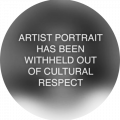KURLKAYIMA NGATHA – REMEMBER ME at FORM, Perth
Ended — at FORM

Exploring links between botany, land and cultural identity, Kurlkayima Ngatha—Remember is a new, multi-part exhibition examining Aboriginal societies’ methodology of plant use and knowledge systems. Kurlkayima Ngatha—Remember Me encompasses a range of art forms including film, documentation, paintings and installations, and opens at FORM Gallery on 26th February 2016 from 6-8 pm.
Kurlkayima Ngatha—Remember Me presents the outcomes of an ongoing project developed in partnership with IBN Corporation and the Yinhawangka, Banyjima and Nyiyaparli people. The project has created a platform for people to reconnect with memories of bush tucker and bush medicine through return trips to Country. Aboriginal voices are captured through films shot by cinematographer, Giovanni Lorusso and plant samples illustrated by Philippa Nikulinsky AM. Nikulinsky has worked as an illustrator of natural history in the mid 1970s, specialising in plants from harsh environments. Her illustrations have been included in many books and magazines. She is the author or coauthor of books on plants, animals, and their environment. The project with the IBN Corporation will continue beyond the Perth exhibition with events scheduled in the Pilbara.
The exhibition also features Fiona Foley who is one of Australia’s most important contemporary Aboriginal artists. Collected by institutions across the nation, Foley’s major public sculptures include: The Edge of Trees, Museum of Sydney, Sydney; Tribute to A’vang, Parliament House, Canberra ; Bible and Bullets, Redfern Park, Sydney and Black Opium, State Library of Queensland, Brisbane.
Foley recently undertook a field trip to the Pilbara and has been specially commissioned to create artwork for the exhibition in response to her time in the North West where she travelled through the Burrup, Millstream Chichester National Park, Weeli Wooli Creek and Newman to meet traditional owners.
Foley’s work commonly incorporates botanical elements as symbolic, metaphoric and cultural material. Foley has a reputation as a provocateur, often challenging the status quo through revealing hidden or marginalised aspects of Australian history and race relations. For instance, for Kurlkayima Ngatha—Remember, the artwork Pontificate On This (2015) evokes not only Foley’s sense of humour but the cast aluminium clay pipes number 66, deliberately mirrors the number of sections within Western Australia’s 1905 Aborigines Act, echoing the earlier Queensland legislation referenced in Foley’s significant body of work on opium. In this way, Foley’s work draws out the parallels between Queensland and Western Australia, states in which the tools of colonial administration were particularly blunt and used to assert power and quell the Aboriginal population.
Artwork by Ikuntij artist Eunice Napanangka Jack represents an interpretation of Country near Lake Mackay. Eunice uses layers of colour to build up a vision of the bush flowers and grasses. This inclusion is representative of the intercultural exchange that is part ofKurlkayima Ngatha—Remember, where desert women will travel to the Pilbara to share their use of plants in medicine and art. As Dr Chrischona Schmidt writes in an essay for the publication, which accompanies the exhibition, Eunice’s work brings her Country with her into the painting. ‘When painting, Napanangka sings the songs of her ancestral spirit, the wallaby woman; she travels through her Country whilst painting, and her meticulous dots evoke the wildflowers around Tjukurrla after the rain. The deep waterhole of Tjukurrla is a constant inspiration for her art. Before the rain, during the rain and after the rain.’
Kurlkayima Ngatha—Remember explores place and belonging, memory and loss, renewal and decay, and asks what the future could look like for a system of knowledge that sustained life for an estimated 50,000 years of continuous culture.
Participating Artists
More information
Visit event website.
